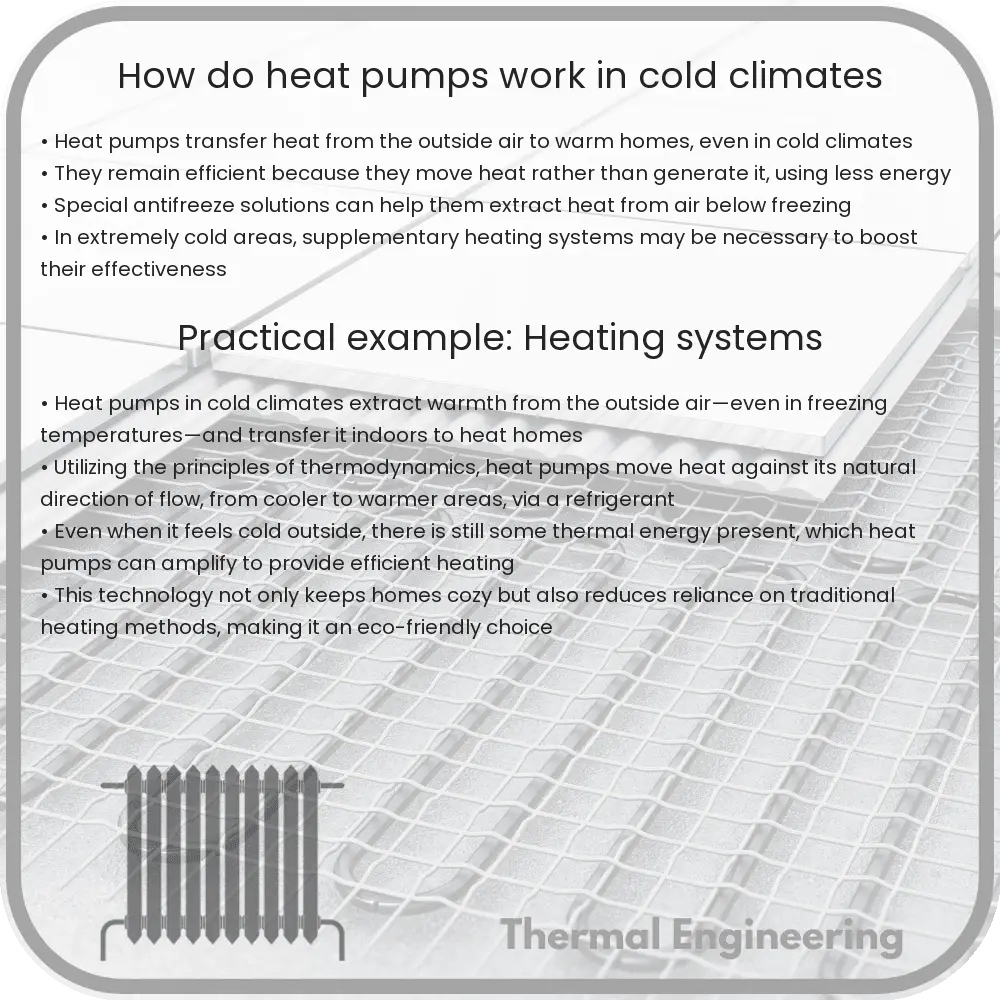Learn how heat pumps function efficiently in cold climates by utilizing advanced technology and design adaptations.

How Do Heat Pumps Work in Cold Climates?
Heat pumps are a popular and efficient option for heating and cooling homes, even in cold climates. But how exactly do they manage to extract heat from chilly outdoor air and use it to warm a home? This article explains the principles behind the operation of heat pumps in cold environments, their components, and the technology that enhances their effectiveness in lower temperatures.
The Basic Operation of Heat Pumps
At its core, a heat pump uses the principles of heat transfer to move heat from one location to another via a refrigerant. The process involves several key steps and components:
- Evaporator Coil: Here, the refrigerant absorbs heat from the outside air, even when temperatures are low.
- Compressor: The compressor increases the pressure of the refrigerant, raising its temperature.
- Condenser Coil: Once the refrigerant is heated and pressurized, it is moved to the condenser coil inside the home, where the heat is released into the home’s heating system.
- Expansion Valve: This component reduces the pressure of the refrigerant, cooling it down before it returns to the evaporator coil to repeat the cycle.
Challenges in Cold Climates
Colder climates present unique challenges to heat pumps, primarily because the colder the outside air, the less heat there is available for the heat pump to transfer inside. As temperatures drop, most standard heat pumps become less efficient and may struggle to provide sufficient warmth.
Technological Adaptations for Cold Climates
To address these challenges, several technological adaptations have been developed:
- Dual-Fuel Systems: These systems pair a heat pump with a more traditional heating system, such as a gas furnace. The heat pump operates when temperatures are moderate, and the furnace kicks in only when extremely cold conditions make the heat pump less efficient.
- Advanced Compressors: Some heat pumps are equipped with variable-speed or two-stage compressors that can adjust their output depending on the demand, improving efficiency and performance in lower temperatures.
- Enhanced Vapor Injection: This technology allows heat pumps to boost output and efficiency in cold weather by injecting vapor into the compressor at strategic points of the heating cycle.
Moreover, newer models of heat pumps are built specifically for cold climates (often referred to as “cold climate heat pumps”) and can perform effectively at temperatures as low as -15°F or lower. These systems utilize special designs and refrigerants capable of extracting heat from severely cold air.
Conclusion
Heat pumps are not only suitable for moderate climates but, with the right technology and design, can also provide an efficient heating solution in cold climates. Innovations like dual-fuel systems, advanced compressors, and enhanced vapor injection have significantly improved the performance of heat pumps in cold weather, making them a smart choice for energy-conscious homeowners in colder regions.
Understanding the function and capabilities of heat pumps in differing climatic conditions can help homeowners make informed decisions about their heating and cooling needs, ensuring comfort regardless of the temperature outside.